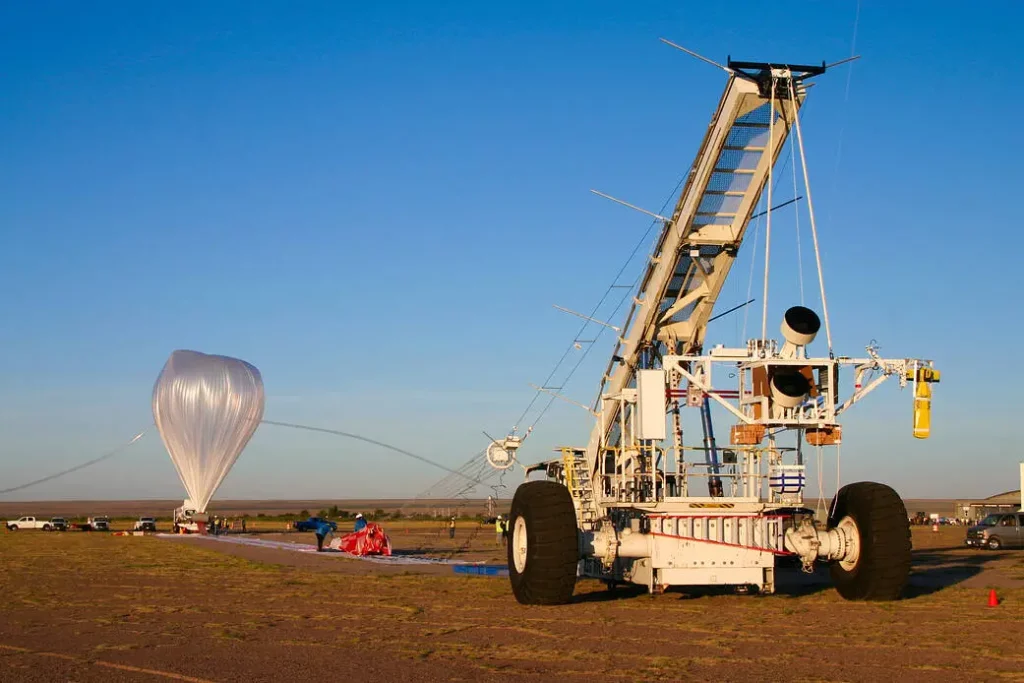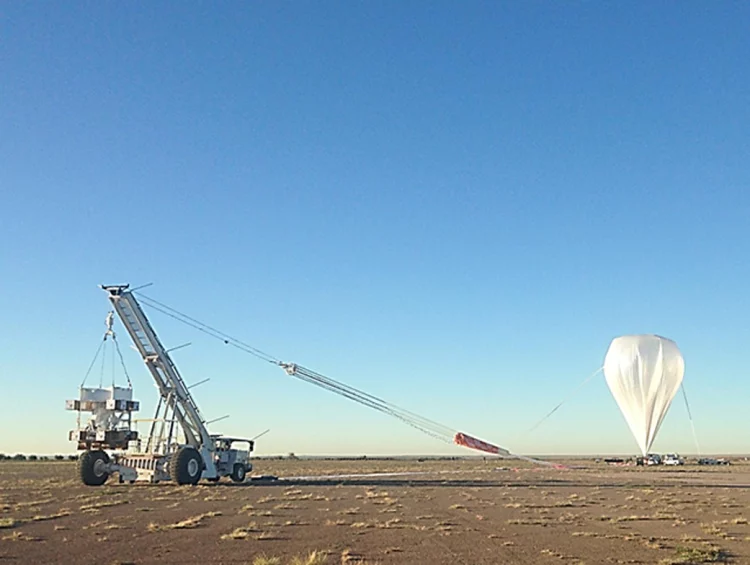In August 2024, NASA is set to launch eight scientific balloons from New Mexico, marking a significant step in advancing research in atmospheric science, cosmic rays, geophysics, and space science. This mission will offer unique opportunities for scientists to enhance their understanding of our universe and Earth’s environment.
1. Mission Overview
NASA’s scientific balloon program aims to conduct a range of scientific experiments and observational tasks using high-altitude balloons. These balloons can float for extended periods at high altitudes, providing data beyond what is possible from ground-based observations. The eight balloons planned for this mission will be launched from the White Sands Missile Range (WSMR) in New Mexico, each carrying different scientific instruments to address various research needs.
2. Advantages and Applications of High-Altitude Balloons
Scientific balloons, typically filled with helium or hydrogen, can float for hours or even days at high altitudes, close to space. The advantage of these balloons lies in their ability to provide high-altitude observational data and experimental opportunities at a relatively low cost. Compared to satellites, the launch cost of balloons is significantly lower, and their payloads can float freely after release, making them ideal platforms for various scientific experiments.
2.1 The Physics of Balloon Flight
Scientific balloons generally operate at altitudes ranging from 10 to 40 kilometers, well above commercial flight levels. This altitude range is situated between the troposphere and the stratosphere, allowing observations free from atmospheric interference while providing a near-space environment. Balloons are influenced by air currents during their flight, making their trajectories difficult to predict, but scientists can monitor and adjust the balloon’s equipment in real-time to obtain the desired data.
2.2 Application Areas
Scientific balloons are utilized across multiple fields, including but not limited to:
- Meteorological Research: Measuring parameters such as temperature, humidity, and pressure to improve weather forecasting models.
- Cosmic Ray Research: Detecting high-energy cosmic rays and their impact on Earth’s atmosphere.
- Space Environment Monitoring: Studying the effects of the space environment on Earth’s magnetic field and atmosphere.
- Geophysical Research: Collecting data on Earth’s surface and atmosphere to support studies on natural disasters like earthquakes and volcanic activity.

3. Mission Details
The launches will take place at NASA’s White Sands Missile Range, a premier site for missile testing and launches. This location not only offers an optimal geographic setting but also provides favorable climate conditions for extended balloon flights.
3.1 Pre-Launch Preparations
Prior to launch, the scientific team will thoroughly inspect and calibrate the balloons and their instruments. Each balloon carries different scientific devices that must be rigorously tested to ensure they function correctly in the high-altitude environment. The inflation process of the balloons must also be precisely controlled to achieve the desired altitude and maintain stable flight.
3.2 Experimental Equipment
Each balloon is equipped with various experimental devices, such as meteorological sensors, radiation detectors, and imaging instruments. These devices record data throughout the balloon’s flight and transmit it back to Earth in real-time. Scientists analyze this data to understand changes in the high-altitude environment and the impact of various factors on balloon flight.
4. Scientific Research and Outcomes
The data collected from these scientific balloons will provide valuable insights into high-altitude environments. This data not only advances fundamental scientific research but also has practical applications, such as improving weather forecasting models and assessing the impact of climate change. The findings may also reveal new scientific phenomena, offering valuable clues for future research.
4.1 High-Altitude Meteorology
High-altitude meteorological research is a crucial component of the scientific balloon program. By measuring atmospheric parameters at high altitudes, scientists can better understand atmospheric dynamics and enhance weather prediction technology. This data is essential for forecasting extreme weather events and evaluating the impacts of climate change.
4.2 Cosmic Ray Detection
Cosmic rays are high-energy particles originating from deep space that can penetrate Earth’s atmosphere and affect human health and technological systems. Scientific balloons can detect these cosmic rays at high altitudes, studying their sources and characteristics. This research helps understand cosmic ray impacts on Earth and provides insights for future space exploration missions.
4.3 Space Environment Monitoring
Scientific balloons are also used to monitor changes in the space environment, such as fluctuations in Earth’s magnetic field and the effects of solar wind on the atmosphere. These monitoring efforts help scientists understand the interactions between Earth and the space environment and support space weather forecasting.
5. Future Prospects
NASA’s scientific balloon program is an evolving research field with ongoing advancements. As technology progresses and research needs grow, the applications of scientific balloons will become even broader. Scientists will continue to explore the potential of high-altitude balloons for scientific research and seek new methods to improve the precision and efficiency of balloon experiments.
5.1 Technological Innovations
With the advent of new technologies, the design and performance of scientific balloons are expected to improve. Future balloons may be equipped with advanced sensors, enhanced data processing capabilities, and other innovations. These technological advancements will enable balloons to conduct more complex experiments and provide higher-quality data.
5.2 Interdisciplinary Research
The application of scientific balloons extends beyond any single field, with future research potentially involving more interdisciplinary collaborations. Meteorologists, physicists, environmental scientists, and other experts can work together through scientific balloon projects to tackle complex scientific questions and advance fundamental knowledge.
6. Conclusion
NASA’s scientific balloon program offers a unique perspective for observing and studying Earth’s and space environments. These balloons not only collect valuable high-altitude data but also provide new approaches and methods for future scientific research. The upcoming launch of eight scientific balloons from White Sands Missile Range will contribute to various scientific fields, bringing new discoveries and advancements. As NASA continues to push the boundaries of scientific balloon technology, the insights gained will enhance our understanding of the universe and support humanity’s exploration of space.


















































Discussion about this post